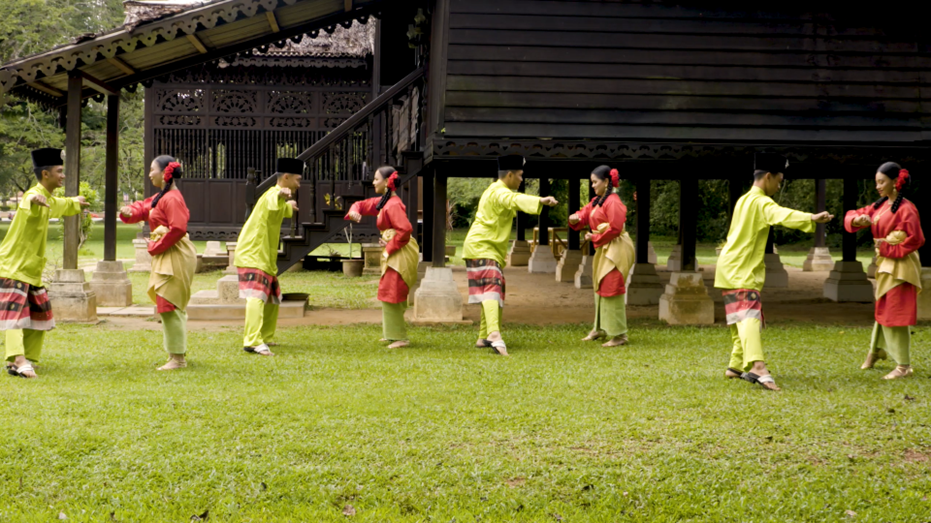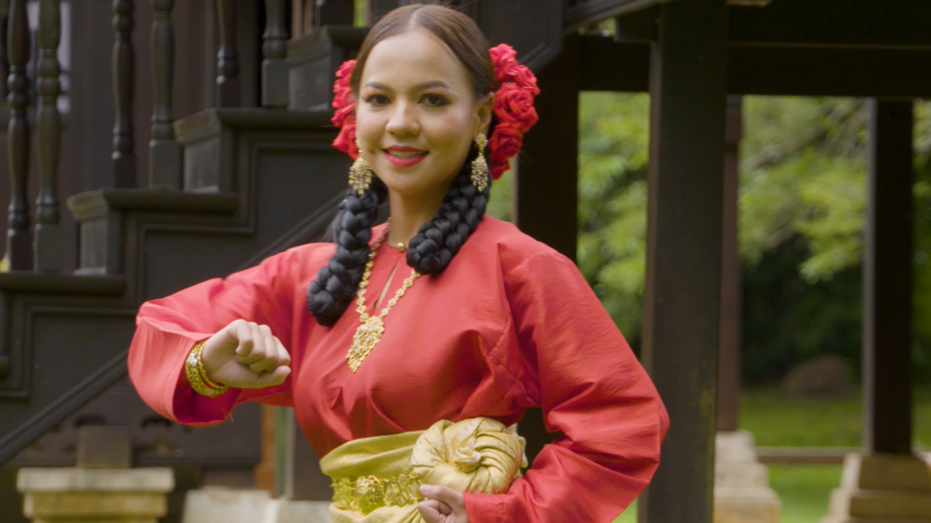ARTS AND CULTURE INFORMATION GATEWAY
Immerse yourself in the colorful world of art and culture! From traditional heritage to contemporary works, discover uniqueness that reflects the nation's identity and identity
TARIAN ZAPIN GHALIT
Picture
14
Video
Available
Today's Visitor
11
Number of Visitors
1177
Introduction and history
In general, Tarian Zapin is more in vogue in Johore. Nevertheless, the Kedahan do dance it, which is named Zapin Ghalit or Ghalet.
‘Zapin’ is from an Arabic word, ‘zafn’ (Kamus Besar Arab-Melayu, 2000, dewan Bahasa Pustaka). While when a male has moved his legs fast following a melody, which is dancing, is ‘zaffana’. The Malays pronounce it ‘zapin’, simply referring to the dance.
In Kedah dialect, ‘ghalit’ means careless, not alert, or complacent. Therefore, the zapin ghalit choreography displays the moves portraying this laid-back life.
To begin with, tarian zapin is influenced by Arab culture, thus in the old days, danced only by men. Then too, it was educational, used as a medium to preach Islam through its poems and songs.
Zapin ghalit was initially an entertainment at Johore royal courts, brought from Hadramaut, Yemen, by Arab traders to Johore in the early 16th century.
As times and perception change, zapin has turned to become Malay culture in the Malay Archipelago, especially the Malay Peninsula. Thus there is a shift in the tide too where women are included in the dance.
The large-scale migration of Yemenis to Johore in the 19th century has formed two zapins: Arab and Malay. The original dance had gone through changes inspired by the Yemenis in Johore which eventually produced these two dances.
Zapin ghalit is staged at cultural events in Kedah and throughout the country.
Male dancers wear Baju Melayu and songket sampin berdagang luar while ladies, baju kurung teluk belanga, samping and hair pieces, the cucuk sanggul.
- Drum
- Kerincing
- Accordion
- Violin
There are three basic moves, and the end move is called wainab. The three basics are danced by both male and female dancers. But we see that naturally, the moves are executed more gracefully by ladies, and more energetic by men.
Zapin Ghalit was created by Wan Mohd Nor bin Wan Alam, or more known as Wan Nor Alam. He is a choreographer born in Kedah.
Wan Nor Alam created tarian zapin ghalit without drumbeats. Instead, it’s like the Hadrah drumming music. The melody is Arabic-like, unlike the Malay zapin. There are also ‘waiting style’ moves where the dancers remain motionless.
Wan Nor Alam had an inspiration to create it when he was in Bangkok in 1999 while promoting the heritage of Malaysia with the Kedah Cultural Organization.
Achievements
1. Champion - National Dance Festival (BKNK), 1999
2. Champion - Zapin Festival (FesZan) 2007 (UPM)
3. Champion - Traditional Dance Champion (Malaysian Dance) 2014 Kelantan State Level (Le' Waris)
4. Best Female Dancer - Zapin Festival (FesZan), 2007, (UPM)
5. Best Performance Award - Zapin Festival (FesZan) 2007 (UPM)
6. Best Fashion - Zapin Festival (FesZan) UPM, 2007.
7. Best Female Dancer - Zapin Dance Competition Organized by Universiti Malaysia Sabah (Sabah Dance Gems)
8. Champion - Malaysian Dance Festival 2019 (Tagap Dance Theater Sabah)
9. Champion - Dance Festival, the Federal Territories Group, 2001.
Reference Source
- Dewan Bahasa Pustaka. (2000). Kamus Besar Arab-Melayu: Kuala Lumpur.
Ibnu Manzuur. (1994). Lisaanul Arab.- Mu’jam Asasi
Location
State JKKN Contact Information
Encik Mohammad Salleh bin Mahmud
Cultural Officer
Jabatan Kebudayaan dan Kesenian Negara, Kedah
Kompleks JKKN Kedah
Lot PTD 400, Pumpong
05250 Alor Setar
KEDAH DARUL AMAN
011-10899646

 Taman Malaysia, Alor Setar, Kedah
Taman Malaysia, Alor Setar, Kedah













